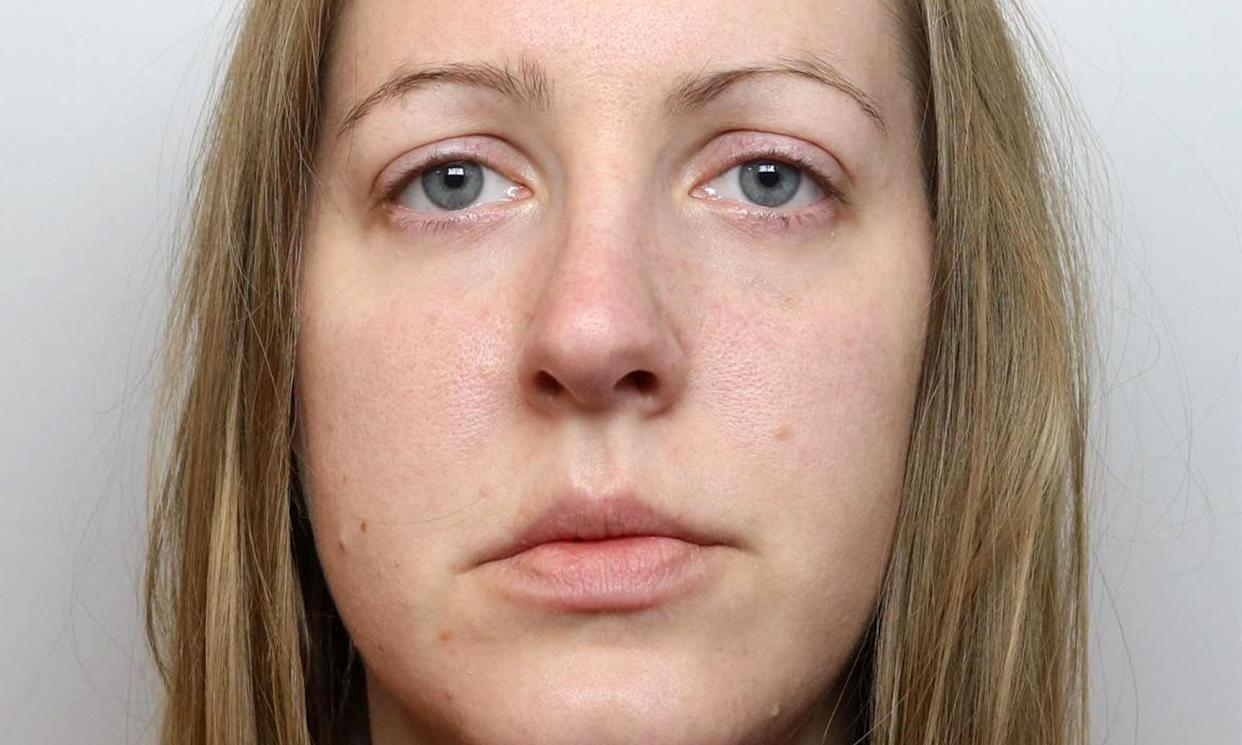Lucy Letby ‘caught virtually red-handed’ trying to kill newborn baby, new trial hears

A nurse who murdered seven babies was “caught virtually red-handed” trying to kill another newborn by dislodging her breathing tube two hours after she was born, a jury has been told.
Lucy Letby, 34, is accused of attempting to murder the baby girl on the neonatal unit of the Countess of Chester hospital, in north-west England, where she worked.
On the first day of the trial at Manchester crown court, jurors were told that Letby has been convicted of murdering seven babies and attempting to kill a further six. She now faces a further count of attempted murder upon which the jury in her original trial could not reach a verdict. Letby has pleaded not guilty.
Nick Johnson KC, prosecuting, told jurors that Letby was “caught virtually red-handed” trying to murder the newborn, known as Baby K, by a doctor who walked in on her in the early hours of 17 February 2016.
The jury was told that the “extremely premature” infant had been doing “remarkably well” for a baby born 15 weeks premature. Baby K, who had not yet been named, was intubated with a breathing tube while preparations were made to transport her to a specialist hospital, the court heard.
Johnson said the allegation against Letby was “very straightforward” and that she had “deliberately displaced” the newborn’s breathing tube when her designated nurse had briefly left her side at about 3.40am.
The prosecutor said one of Letby’s colleagues, Dr Ravi Jayaram, walked in on the nurse “doing nothing” while Baby K’s blood oxygen levels collapsed suddenly. Alarms would ordinarily have sounded to alert staff that a baby’s heart rate or blood oxygen levels had fallen below a certain level – but this time they did not, Johnson said.
“The reason the alarms didn’t sound was because somebody had disabled them,” he told the jury. “When Dr Jayaram walked into the nursery he saw Lucy Letby was standing over [Baby K]. [Baby K’s] blood oxygen was falling but the alarm was not sounding. Not only that, but Lucy Letby was doing nothing.”
Johnson said the “only reasonable” thing for Letby to have done was to call for help or assist the baby’s breathing. He added: “The reason [Baby K] was desaturating was because the ET [endotracheal] tube had been displaced.
“We suggest the fact Lucy Letby was doing nothing and the fact the alarm was not sounding is evidence from which you can conclude that Lucy Letby, the convicted murderer, had displaced the tube.”
Johnson said Letby had been “caught virtually red-handed by Dr Jayaram” and added: “It’s a very straightforward factual issue in this case: if that tube was displaced how did it happen?”
Jurors were told that Baby K collapsed twice in the following hours, when Letby was allegedly present. On both occasions, the prosecutor said, the breathing tube had been displaced.
Johnson said Letby was “trying to create the impression” that the newborn was dislodging her own tube despite being extremely premature and heavily sedated on morphine.
“We say that is coincidence too far,” he said. “Lucy Letby [was] trying to create an impression after being caught almost red-handed … that this child had a particular problem.”
By this time, the court was told, Letby had murdered five babies and would go on to murder two triplet brothers in June 2016.
Jurors were told that Baby K died days later at another hospital, but Letby is not accused of having caused her death. Benjamin Myers KC, defending, said his client denied dislodging any breathing tubes and that the Countess of Chester hospital was “not the ideal clinical setting” for an infant born 15 weeks premature.
The barrister said the case ultimately relied on the evidence of Dr Jayaram and whether his account was “truthful or accurate”. Myers described Letby’s murder convictions as “potentially a powerful and emotive” aspect of the case and urged jurors not to let their “fair vision [be] obscured by raw emotion or bias”.
He added: “Convictions like that in a trial like this may make it easier to convict someone of something they haven’t done which is why it is important to be careful about how you approach them.”
The trial continues.

 Yahoo News
Yahoo News 
